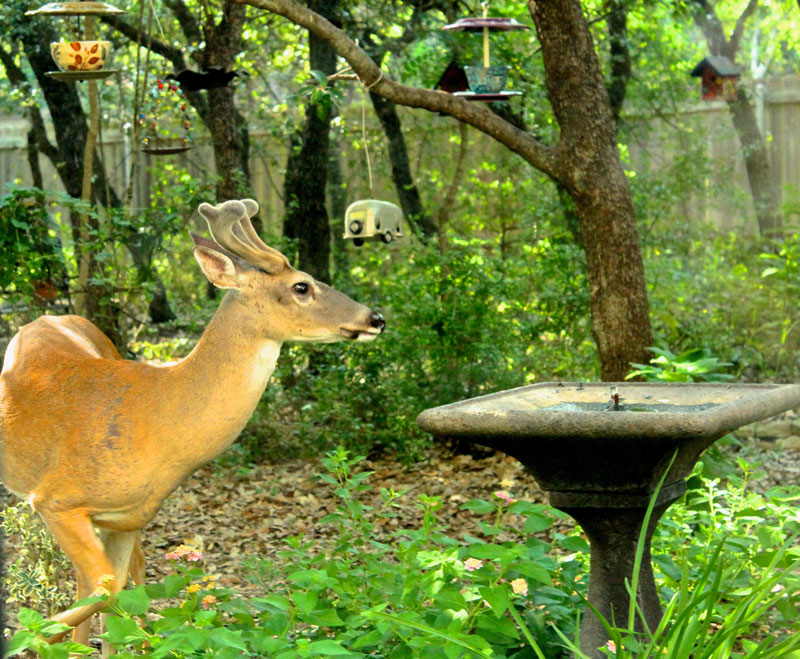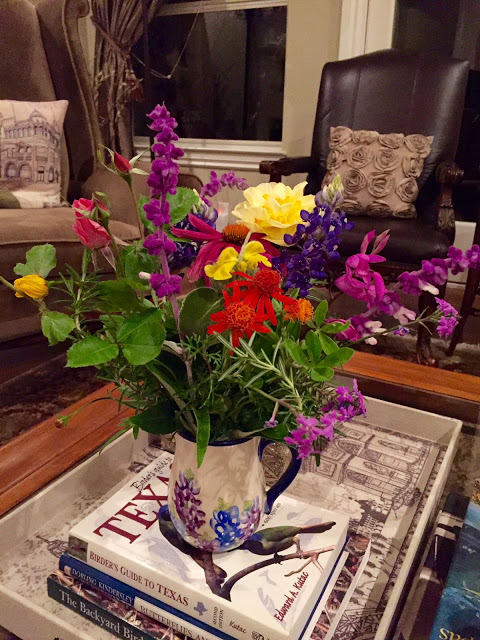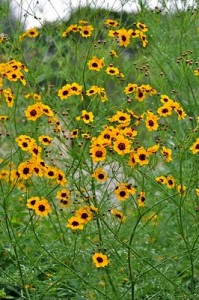Wildlife habitat brings nature to your doorstep
Slightly cooler temperatures have many Texans venturing back outside to embrace nature in their favorite outdoor spaces.
Supporting wildlife in your garden can help maintain the balance of nature in an urban setting. Watching or photographing the antics of wildlife creatures can provide hours of enjoyment for children and grown-ups alike. And listening to the songs and chirps of birds, toads, frogs and others will be music to your ears. It can be like having the National Geographic channel in your own back yard.
Many people hang bird feeders or houses in their yards, but with a little garden habitat planning, you can bring a whole new variety of wildlife to your landscape. Birds, bats, toads, frogs, lizards, snakes, turtles, squirrels, rabbits, raccoons and many other small creatures can bring you hours of enjoyment. While some people might not care to invite all of these animals into their yards, most of them are harmless. Many even eat destructive insects or rodents.
How do you go about creating a friendly and successful habitat for wildlife? There are four primary elements necessary to help wildlife survive in your garden.
- Shelter
- Food
- Water
- Places to raise young
Shelter
For wildlife to thrive, animals need shelter from predators and weather extremes – the blazing summer heat, winter’s cold and rain, and our central Texas droughts.
Many garden plants can provide both food and shelter. Trees, shrubs, grasses, flowers, groundcovers and vines can all provide protection.
For example, some birds thrive in the underbrush and like small, dense shrubs for shelter, while others prefer wide-open spaces in which they can keep an eye out for predators.
Frogs, toads and lizards like rocks, piles of leaves, stumps and logs. If you don’t have an area in your yard to leave wild or natural, you can pile some leaves and rocks in shady parts of a flowerbed to welcome these creatures.
Food
Native plants can provide food for all kinds of wildlife with their nuts, berries, foliage, fruits, sap, and seeds.
Different species like different sources of food. Most native and adapted flowers are nectar sources for hummingbirds, butterflies and bees. Beautyberry, coral berry, holly, juniper, sumac, wax myrtle, viburnum, native Texas persimmon, oak, pyracantha, nandina, yaupon holly and fruit trees are just some of the things you can plant in your garden to support wildlife.
In addition to seed from native wildflowers, birds also eat insects, worms, fruits, nuts and berries. While many birds eat sunflowers placed in feeders, there are other kinds of seeds you can provide to entice many new species of birds into your back yard.
Some birds, including titmice, nuthatches, woodpeckers and mockingbirds will eat bits of fruit like oranges, apples and raisins. Woodpeckers and chickadees also like suet blocks, which is birdseed in a block of rendered fat and provides extra energy – an excellent source of winter food. Nyjer seed – also commonly known as thistle seed – is popular with many backyard bird species, particularly finches.
Small frogs and toads eat insects, worms and snails. Lizards, like our native Anoles and Spiny lizards, eat crickets, spiders, roaches and grubs. We know squirrels eat nuts, but they also like seeds, grains and fruit. Rabbits will eat many different plants, so while you want to keep them out of your vegetable garden, they will also eat berries, flowers shrubs and grasses.
Water
We all need water to survive, and animals in central Texas have greater needs than some because of our frequent and severe drought conditions.
In addition to ponds and standing birdbaths, shallow birdbaths or saucers on the ground can help provide water to many other species. Logs, rocks and other shallow structures are good water sources for turtles, frogs, toads, lizards and even butterflies.
Change the water frequently, though, to keep it fresh and clean and prevent mosquito breeding.

Places to raise young
Most habitats that provide adequate cover also provide animals with the right conditions for raising their young.
Small mammals will burrow in areas ranging from wildflower beds to basic garden undergrowth. Frogs, toads and lizards need groundcover and moisture. They like a carpet of leaves and groundcover to shield the. And the nesting preferences of birds are as varied as the species themselves, including dense shrubs, trees, birdhouses and even potted plants. Because birds use many different materials to build their nests, you can help by hanging a mesh net or something similar with fiber scraps, wool, or lint in a tree, and then watch them draw from it to craft their homes.
To provide a safe habitat for wildlife in your yard, it is important not to use insecticides, pesticides, and other chemical products like lawn weed & feeds or weed killers, as these can kill both the animals and the food sources on which they depend in the wild.
As temperatures begin to drop and perennials and wildflowers lose their leaves and go dormant, resist the urge to prune everything bare for the sake of neatness. Your woodland friends will thank you when winter arrives and they have sheltered habitat areas in which to weather the winter.



